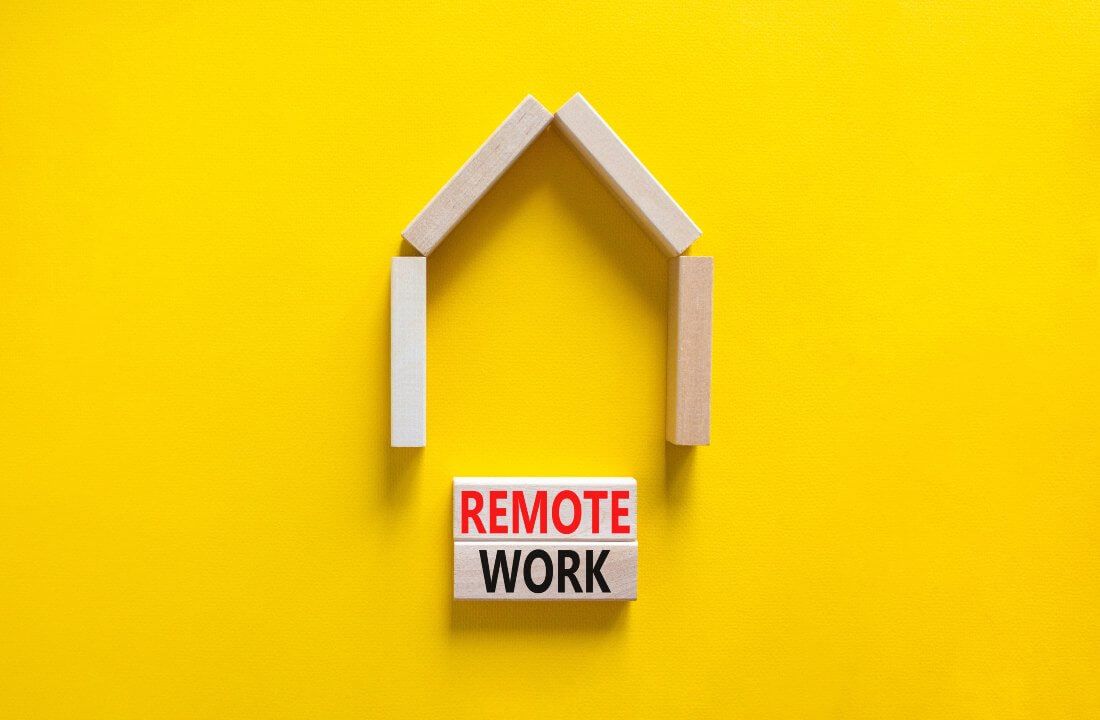General Employee Productivity Stats
1. Meeting Free Days Increase Focused Work By 22%
Enforcing meeting free days across the company can help individuals find time to finish their individual roles and tasks. Reducing the stress of meeting overload with this tactic can increase focused work output by 22% on meeting free days.
2. The Most Productive Days Of The Week Are Monday And Tuesday
According to a study involving 300 HR managers at US companies, the most productive days of the work week are Mondays and Tuesdays. Interestingly, Monday was reported as the most productive by 24%, but Tuesday won out with 39% of managers believing it to be the most productive day.
3. 67% Of Managers Track Productivity As Performance
Employees and managers have different concepts of productivity, which could affect how productivity is measured. 67% of managers think that performance is the best way to measure productivity, while 50% of employees believe general activity is the best metric.
Although the two groups differed on the most important metric, for both groups the second most important metric was efficiency, showing that there are shared beliefs between the two subsets.
4. 54% Of Leaders Fear The Pandemic Changes Has Negatively Affected Work Output
Another statistic highlights the different perceptions between managers and employers. While 80% of employees have reported being as or more productive since they started working remotely, this is counteracted by 54% of leaders thinking productivity has reduced.
5. The Average Worker Is Productive For 2 Hours And 23 Minutes A Day
In a rather jarring report, it was found that the average office worker is productive for around 30% of an 8 hour workday. This figure increases for all jobs, with the average worker being productive for 60% of the day.
Business owners and leaders should be seriously considering the traditional 8 hour work day with statistics like these.
Facts On Hybrid Work & Productivity

6. A Hybrid Workforce Is Key To Productivity And Growth
With the advent of hybrid work, it’s been proven time and time again that location doesn’t matter when it comes to productivity. A recent global report found that 63% of high-revenue growth companies are using hybrid work models that focus on productivity and employee wellbeing. The Power Of Hybrid: 20% Of Hybrid Workers Feel More Productive
20% of hybrid workers feel they are more productive in their jobs when they can choose where to work for the different aspects of their roles.
7. There Is A 5% Increase In Productivity Thanks To Hybrid
There are many different studies on hybrid work and its effect on productivity, but essentially most studies show that mixing the benefits of social office work with the flexibility of remote work increases overall productivity and output by 5%.
8. 87.5% Of People Believe Hybrid Work Is A Good Thing
By analysing public social media posts, we can form general ideas of how the public feel about the evolution of hybrid work in the office. One thousand tweets that mentioned ‘hybrid work’ were analysed and it was found that 95.8% of the tweets were classified as either positive or neutral towards the term. If hybrid work were a politician, it would be a sure thing in the next election.
2023 WFH Facts
9. 11% Of Workers Find There Are Too Many Home Office Distractions
11% of respondents to a Travelperk survey complained that they find there are too many distractions in their home office which can hinder their productivity. This could be due to small living quarters where home offices double as living spaces.
12. Only 51% Of Americans Have A Separate Room To Work From
In a 2020 study by Standford University, it was found that only 49% of Americans have their own room which is not their bedroom to work from. This highlights the importance of companies providing working space via a central office or alternative coworking spaces for all employees.
13. 13% Of Employees Are Complaining About Poor WHF Equipment
13% of people in the Travelperk survey also complained about a lack of appropriate office equipment in their home setups. Creating the right environment for employees working at home could boost productivity. Companies, where employees work from home, should ensure that they follow hybrid workplace best practices and provide suitable equipment or a stipend.
Remote Working Statistics

14. Remote Work Is Changing The Way People Work
Perhaps for the better, remote work is changing how people approach their work days. A 2020 UCL academic study found that to help work fit around their life, people are breaking down tasks and then tracking their time working on projects. This technique helps people fit appointments, school runs and exercise classes around their work day providing a greater work-life balance.
15. There Are Three Stages Of Productivity In The Day
It would appear that the work day can be split into three different stages, the morning, the afternoon, and then worryingly, the evening after work. Emails are fast becoming a post-work activity undertaken in the evening. (Morshed et al. 2021).
16. Remote Workers 16.8 More Days A Year Compared To Office-Based Workers
As well as remote work leading to more work being done after-hours, remote workers also report working 1.4 more days each month than the average office worker.
More needs to be done to improve their work-life balance. Perhaps the hybrid work model could help with this, by encouraging employees to come into the office more and help separate work from personal life.
17. 33% Of Remote Workers Claim Routine Is Their Key To Productivity
Although there are reports that show remote workers have taken a blended approach to get their work done at home, this might not be the most productive approach. By mixing work tasks with personal appointments into the workday, they might be less productive. 33% of remote employees are adamant that maintaining set working hours was the key to being productive.
18. 25% Of Remote Workers Stay Productive By Working In The Same Place
The same report by Airtasker found that 25% of remote workers believed their key to staying productive is by being consistent with where they choose to work each day. This is incongruous with other studies that show variety in work locations helps with productivity.
Office Productivity Insights

19. 65% Of Bosses Are Distracting Employees
Nearly a quarter of office employees said their boss distracted them from doing their work. Sixty-five percent of office workers said it was because their boss was too talkative.
20. Scientists Are Far More Likely To Collaborate In The Same Building
In a win for hybrid work, an academic study found that working in the same building helps to significantly increase collaboration. The study on MIT scientists found that moving two researchers into the same building increased their collaboration rate up to 2.7 in the third year after moving.
21. Office Rent Can Pay For Itself With 10% Increase In Productivity
Since the pandemic, many offices have gotten rid of their offices as a way to cut costs, however, if this move reduces general productivity then it might not be worth it. If a shared workspace boosts productivity by just 10% then it will recoup any extra costs.

Relationship Between Engagement & Productivity
22. Positive Relationship Between Hybrid Work Productivity And Employee Engagement
According to the survey conducted by McKinsey, 58% of the employees said that their productivity increased by hybrid work, 54% claimed that inclusion and diversity in the workplace improved, employee engagement increased by 45%, and 36% said that customer satisfaction increased.
23. Only 2% of Danes Work Extra Hours
Even though only 2% of workers in Denmark work overtime, they still have one of the highest productivity levels in the world.
24. Hybrid Working Might Not Increase Productivity But Other Benefits Win Out
Interestingly, hybrid work might not always be the answer to productivity concerns however the other benefits can counteract the small increase. A study of 1612 employees in the same organisation found that although a new hybrid work schedule only increased productivity by 1.8%, the company managed to reduce attrition rates by 35% as a result of increased job satisfaction!
25. Highly Engaged Employees Report 17% Higher Productivity
A recent report by Gallup showed the positive effects of engaged employees on productivity and revenue. The report revealed that highly engaged employees have 21% higher productivity than disengaged employees as well as 21% higher profitability.
26. Attrition Rates Drop By 25% With Remote Working
It’s well known that satisfied employees are less likely to quit, and implementing hybrid or remote working can reduce staff turnover by up to 25%. As recruitment and training costs can be expensive for organisations, this is great news for companies under financial pressure.
27. Organisations Can Increase Productivity By Involving Employees
An older study, but nevertheless, important. A long-term study that looked at the effects of including employees in the decision making process found that they are generally more efficient and productive. This backs up the theory that company culture is key to happy employees, encouraging staff members to feel a sense of belonging is important to a happy workforce.
Toxic Productivity Statistics

28. German Workers Are 27% More Productive Than British Workers
This statistic is repeated in other European countries but German workers are 27% more productive than British workers, yet German workers have short working hours just like Denmark.
29. Employees Call For Only One Day Of Meetings A Week
A controversial idea that might not be realistic, but perhaps reducing meeting days to only one a week is the key to happy, productive and satisfied employees. Laker et al. (2022) surveyed 76 companies that had started implementing meeting free days, with strategies ranging from one meeting-free day a week to completely getting rid of them!
The results were astounding with all companies reporting improvements in autonomy, communication, engagement, and satisfaction leading to an overall increase in productivity.
30. 52% Of Employees Have Toxic Leaders That Impact Their Output
52% of employees find that their boss stresses them out which in turn distracts them from their work. More should be done to help managers in their training, as learning to be an effective hybrid manager is a new skill to master.
31. Video Call Pressure Can Lead To Negative Feelings
Companies that force employees to have their cameras on during video calls can create unnecessary pressure on individuals, making them feel anxious which results in reduced productivity. (Okabe-Miyamoto et al. 2021)
32. Perceived Reductions In Employee Privacy Leads To Lower Productive Output
Remote and hybrid working has unfortunately led to an increase in employee tracking, which has, understandably, resulted in higher stress levels being reported by employees. Organisations need to trust employees in order to regain a healthy relationship that focuses on wellbeing.







